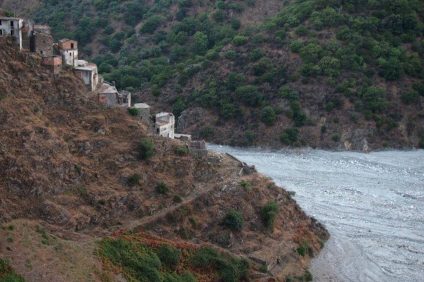La Lantern of Genoa it is one of the symbols of the Ligurian capital, much loved by the Genoese people. It is the largest lighthouse in the Mediterranean with its own 77 meters high (117 if we consider the rock from which it stands). On the European level, the Lantern is second only to Lighthouse of the Île Vierge (Brittany), higher than the Genoese monument of 5 meters. The Ligurian lighthouse is located in the area of port of GenoaIn the neighborhood Sampierdarena. The hill on which the structure stands is called Head of Faro. The Lantern is divided into two stone orders and to reach the top you have to climb well 365 steps. In the lower part it is painted the municipal coat of arms, that is the red cross on a white background. The Genoa Lantern not only serves as a lighthouse for ships arriving at the port, but also performs the task of airport lighthouse.
History of the Genoa Lantern
The Genoa Lantern is from medieval origin. To date, there are no official documents indicating the year of construction. According to some unofficial sources, the original tower dates back to 1128 (with a height slightly lower than the current Lantern). This had the function of report suspicious vessels but, later, it was used as a lighthouse to help ships get to the port. If initially bundles of dry heather or broom were burned on the top of the tower, in 1326 the first was used olive oil lantern. Only in 1371 there is the first official document in which the Lantern is represented. It is a design entered in the register of the Genoese maritime authority of the time. In the following century, the Lantern became one prigione, in which the king of Cyprus and his wife.

In 1507, Louis XII di France and Duke of Genoa built the fortress of the Bridle to Capo di Faro to garrison the city. Six years later, the Genoese rebels rose up against the French and bombed the Briglia, causing serious damage to the Lanterna. The structure as we see it today is the result of reconstruction which took place in 1543. Over the centuries, despite the various sieges of the city, wars, riots, lightning strikes (the first lightning rod dates back to 1778) and even bombings (including those of the Second World War), the Genoa Lantern managed to resist without causing irreparable damage. In 1846 the rotating wagon was introduced with Fresnel lenses (still used). The fuels used for lighting gave way toelectricity only from 1936 and ultimately the engine weight rotation system was replaced by a electrical system in 1970.

The lighthouse today
The Genoa Lantern performs its function excellently and, unlike many other lighthouses in the world, it still has its own keeper (i.e. the Guardian of the Lantern). The symbolic monument of GenoVa it is inopen to the public, but only up to the first terrace (172 steps). The second order is not accessible to the public, as it is managed by the navy. The lighthouse can be reached on foot, along what is called the "walk of the Lantern", A path of about 800 meters with a splendid view of the city harbor. Just below the lighthouse, inside the fortified part, is the Museum of the Lantern, which reports the history of the monument, with photos, archival films, objects and materials used during the nine centuries of activity of the lighthouse.
Genoa is full of wonders and the Lantern is one of the most spectacular. If you want to visit the "superba", It is impossible not to dedicate a few hours to his"citizen”More impressive, enjoy the beautiful view of the city from the only terrace accessible to the public and maybe discover the story of this monument and why it is so dear to the Genoese people.
Source of featured photograph: © Rinina25 & Twice25 - Commons Wikimedia (CC BY-SA 2.5).





